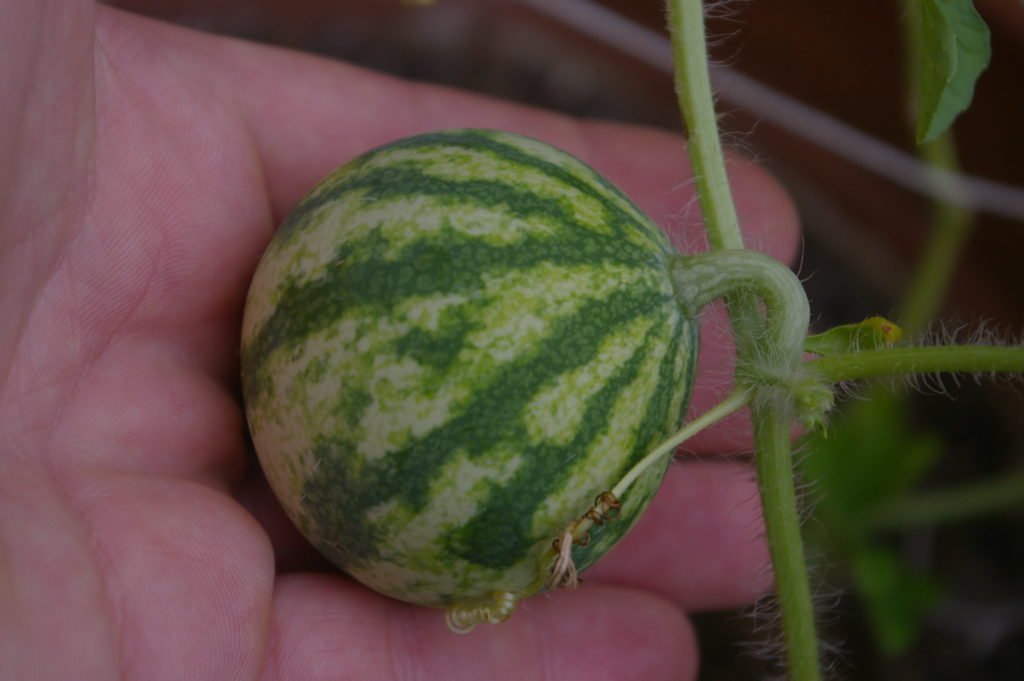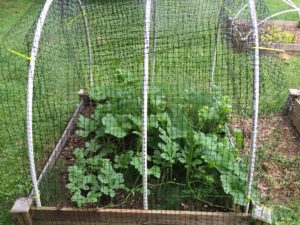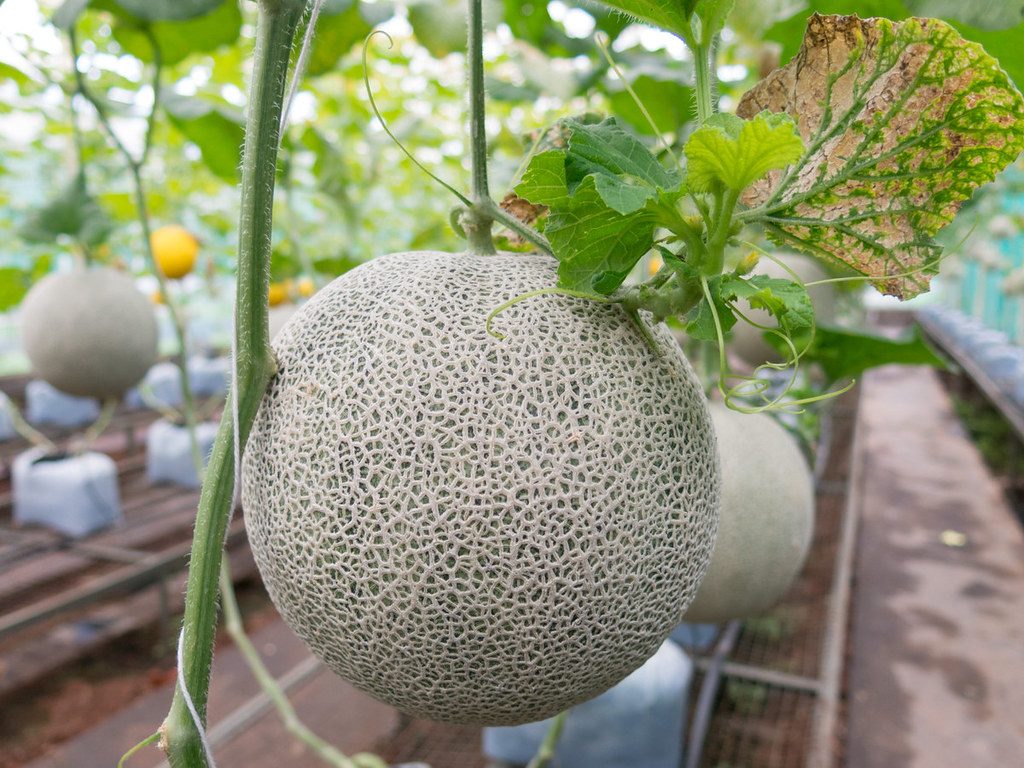Melons all fall under the Cucurbitaceae family of plants. Melons originated in southwestern or central Asia, and have been grown for thousands of years, first appearing in Europe somewhere between the late Middle Ages and the Renaissance, depending on the source. Melons come in two main types. The first is Muskmelons. Musk Melons include most of the varieties of melons familiar in home gardens or at the grocery store, including cantaloupes, casaba melons, honeydews, the various Asian melons, and dozens of others. The other kind is Watermelons. Other members of the Cucurbitaceae family include gourds and other types of plants referred to as melons. One example is the Wax Gourd, also known as the Winter Melon.

Many melons are delicious eaten plain and raw but they can be served in fruit salads, or they can be pickled or cooked in a variety of ways. Watermelon is a sweet and delicious mainstay of summer. Breakfast cantaloupe or honeydew melon is a favorite sweet and crisp start to any morning. Melons all contain a healthy dose of Vitamins A, B6, C, and Potassium. They are a great addition to most diets and are a good source of fiber.
- Musk Melon: Cucumis melo
- Watermelon: Citrullus lanatus
- Annual
- Full sun
- Usually about 80-90 days to full maturity (this varies for each variety)
- Soil should be slightly acidic (6.0 to 6.5 ph)
- Well prepared loamy or sandy soil, with good fertility
- Start seeds in hills, 6 inches tall
1/2″deep
Hills 42 inches apart
- Climate Zones 4-10 (or lower, if there are warm temps long enough)

For most varieties of melon, using hill planting is best. Plant three or four seeds in a mound, about six inches high. Once they have begun to sprout, then thin them to the two best sprouts. A trellis should be used in the garden in most cases, melons really do take up a lot of space. The hills should be one per garden bed, or for larger gardens, separate the mounds by at least 42 inches for muskmelons, and up to 60 inches for the larger watermelons. These should be planted after any frost, and they will grow throughout the summer.
Melons will grow up a trellis easily when encouraged to do so. Include support for them as well, especially as the melons get larger, to keep them attached. Trellis-grown melons will have better resistance to pests and disease. As they grow, check at least every few days to ensure that they are climbing up the support structure. For watermelons, a trellis is possible, but it is harder to ensure that the melons are well supported once they start growing, especially for the larger varieties. Ground growing watermelons or other melons on the ground is fine if needed, though the vines will spread and will take up a lot more space.
Melons are generally recommended to be planted in the garden, due to the size of the plants, but some gardeners have had success with potted cantaloupes. Smaller varieties are better suited for this, but a very large pot, 2 feet deep and 3 to 4 feet wide can be used for a standard size cantaloupe. Trellising for container-grown melons will be a necessity. Melons need at least 8 hours of full sun daily, whether directly in the garden or in containers. They do best with warmer temperatures. Honeydew and cantaloupes need 65-75 degree temperature minimum, watermelons need it to be a bit warmer, 70-90 degrees.
Melon diseases can include fungi such as leaf spot, downy mildew, fusarium wilt, as well as powdery mildew. We suggest treating with a fungicide before the problem begins. Follow label recommendations. The melons should be watered carefully, at ground level, as opposed to overhead spray watering, to avoid issues with most fungi. Regular crop rotation is the best prevention for this overall. Pests that sometimes trouble melons include aphids, cucumber beetles, squash beetles and bugs, and, in the south, melonworms. If needed, applying neem oil is a good organic treatment, as a way of removing them and deterring them from returning.
Good companion plants for melons include dill and garlic. These will discourage pests such as cucumber beetles, and aphids. Brussels sprouts and other cole crops such as kale and cabbage are other good choices for companions, as are beans and peas.

Harvesting melons is pretty easy, regardless of the type of melon. Many will just detach into your hands when fully ripe, or the vine can be cut. The sign of full maturity is different for the different kinds of melons. It’s best to watch and for most, stopping or decreasing watering a few weeks before picking them will enhance the sweetness. Cantaloupes mature between about 70 and 90 days, and they will start to separate from the vine and smell very, very sweet. Watermelons mature between about 80 and 100 days, and the leaves at the base of the stem will turn brown. Honeydews are a bit quicker, usually between 70 and 80 days. These will become a bit softer and smoother, and the color will turn yellow when they are ready to harvest. Other varieties of melon can also vary slightly in the time to full ripeness, and in their specific signs of maturity. The seed package itself will help with that information for the wide variety of melon types.
Harvesting seeds is a fairly simple process. First, it’s important to be sure that the melons are open-pollinated or heirloom varieties, and not hybrids. Second, the melons should be grown separately from other species of melons. This plant breeds by pollination, and they can crossbreed. If they do, the seeds will not breed true, and you won’t know what you will get. Muskmelon seeds can be scooped out and soaked, separating them. Allow them to soak for a few days. The best seeds will sink to the bottom of the container. Separate these better seeds, wash them off completely, and allow them to dry completely. Once fully dry, stored in a bag in the refrigerator for the next year’s harvest!

Contact Author
 info@gardensavvy.com
info@gardensavvy.com Recent Posts
- Smart Gardening: How Technology Is Revolutionizing Horticulture
- Understanding Gardening Zones: What You Need to Know
- The Right Tools For Your Gardening And Landscaping Needs
- Maximizing Your Harvest: Square Foot Gardening Chart for Beginners
- Holiday Garden Scents: Plants for Natural Aromatherapy in Your Home









